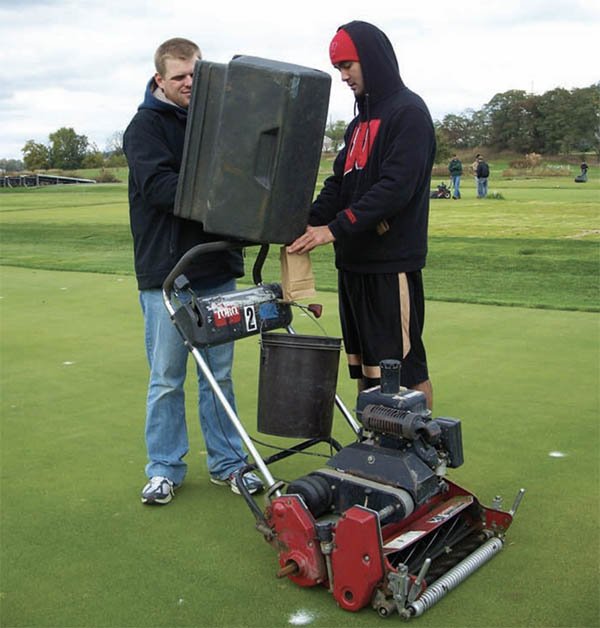After a decade of discussing the benefits of plant growth regulators and how best to apply them to finely cut turf, Bill Kreuser, Ph.D., was concerned he might be on the verge of boring his audience.
Imagine his shock when only two hands shot up after he asked a room of more than 100 people at the recent Ohio Turfgrass Foundation Conference how many had heard him speak previously on PGRs and growing degree days.
 "I couldn't believe it," Kreuser said afterward as he choked down lunch before rushing off to the airport so he could deliver a similar talk the following day at the New Jersey Turfgrass Association Green Expo Conference the following day. "I thought everybody had heard that by now."
"I couldn't believe it," Kreuser said afterward as he choked down lunch before rushing off to the airport so he could deliver a similar talk the following day at the New Jersey Turfgrass Association Green Expo Conference the following day. "I thought everybody had heard that by now."
PGRs are a key element in the superintendent's toolbox, but not a lot is known about them, other than that they suppress growth and help superintendents save money and produce the fast and firm conditions that golfers crave, said Kreuser, shown at right measuring clipping yield with a graduate student.
A decade of research that includes many of Kreuser's colleagues around the country, is helping shed light on how best to utilize these products.
"There are many misconceptions about PGRs," Kreuser said. "The biggest challenge is knowing when to work them. The fluctuations in clipping yield, especially in bentgrass greens, is so much greater day to day than what the PGR is actually doing."
Kreuser's research, which started in 2008 as a master's project at the University of Wisconsin, resulted in a growing degree day model that helps superintendents determine the best time to apply PGRs. The model, which now is incorporated into the university's Greenkeeper app pinpoints application intervals for 10 plant growth regulators at variable rates depending on the desired level of growth suppression.
"If you test a new product and something happens and the grass grows absolutely crazy for the next two weeks, you'd think that product was the worst ever and you'd never buy it again," he said. "Then if you put it down when the grass was growing crazy and suddenly you had two-and-a-half weeks of suppression, you'd say it was the greatest PGR ever, you'd tell all your friends and you'd buy a two-year supply of the stuff. The truth is day-to-day fluctuation is great, and it's hard to visualize if a PGR is having an effect or not."
There are many misconceptions about PGRs. The biggest challenge is knowing when to work them. The fluctuations in clipping yield, especially in bentgrass greens, is so much greater day to day than what the PGR is actually doing.
PGRs, Kreuser said, are affected by heat. He gave the example of Primo at the label rate on a creeping bentgrass green when average air temperatures are 60, 70 or 80 degrees.
When the average temperature is 60 days, the PGR offers up to 21 days of suppression. That drops to 14 days at about 70 degrees and just seven days at 80 degrees.
"In the middle of summer, people tell me 'Bill, they don't work.' They work; trust me," Kreuser said. "What happens when the soil is warm and wet is microbes are breaking down organic matter and they are mineralizing nitrogen, so what we see in the middle of the growing season is that the grass grows very fast. The PGR is having an effect. If you didn't have it, the grass would be growing even faster."
Growing degree days are an aggregate of heat measured in Celsius, and Kreuser's GDD model for determining PGR application intervals has been proven at places like the University of Wisconsin, Rutgers University, NC State, Arkansas and Texas Tech.
He recommends collecting and measuring clipping yield when measuring the amount of growth suppression against turf quality.
"If you don't have enough clippings, turf performance goes down." he said. "If the yield is too high, we're going to get puffy and thatchy.If you get the yield where you want it, then you can get the grass where you want it, and then you can manipulate the PGR and nitrogen rates to get to where you want to be."

